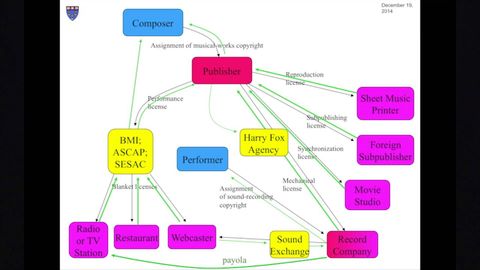
字幕與單字
William Fisher,CopyrightX:Lecture 3.3,The Subject Matter of Copyright。音樂 (William Fisher, CopyrightX: Lecture 3.3, The Subject Matter of Copyright: Music)
00
Jace Ju 發佈於 2021 年 01 月 14 日收藏
影片單字
sound
US /saʊnd/
・
UK /saʊnd/
- adj.可靠的;熟睡(的);酣睡(的);無損傷的;完好的;健全的;明智的
- n. (c./u.)音樂特色;音樂風格;聲音,聲響
- v.i.聽起來,聽起來好像;發出聲響,發聲
- v.t.(使)發聲;(使)作響
A1 初級多益初級英檢
更多 使用能量
解鎖所有單字
解鎖發音、解釋及篩選功能
